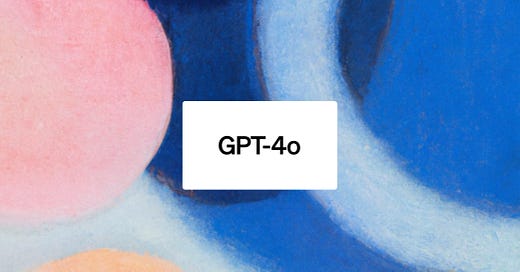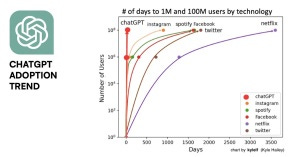GPT-4o: This is the Next Level
Today marks a significant milestone with OpenAI’s introduction of GPT-4o—the ‘o’ stands for omni. It’s a groundbreaking update that’s transforming how we interact with machines by integrating audio, vision, and text seamlessly into a single AI model. This makes handling various types of media incredibly smooth and efficient, significantly enhancing the ChatGPT experience for consumers as well as opening up the floodgates to a new era of reimagined applications.
Information on how GPT-4o operates is limited. OpenAI’s announcement revealed only that GPT-4o is a unified neural network trained on text, vision, and audio inputs. This method contrasts with the prior approach, where separate models were trained for each type of data. This innovative approach simplifies interactions across various media types, contributing to the model’s efficiency and versatility.
One of the most exciting new features is the ability to interact with ChatGPT through video. Now, you can share live footage—for instance, a math problem you’re struggling with—and receive assistance directly from ChatGPT, whether it’s solving the problem or guiding you through it. Additionally, you can share screenshots, photos, and documents with both text and images. This makes ChatGPT more versatile in educational, professional, and personal contexts.
For developers, this update is particularly thrilling. The cost of using GPT-4o has been slashed by 50%, and its performance has doubled compared to GPT-4 Turbo. This means developers now have access to smarter technology faster and at half the cost. GPT-4o is proving to be the best-performing model available right now, excelling across numerous benchmarks. The implications of this are profound, as it opens up new opportunities for innovation due to the improved cost and performance. It’s a fantastic time to be building with AI, as these improvements promise to unlock a whole new world of possibilities. Plus, it’s a great reminder of the value of a platform that keeps you connected with the latest AI advancements.
You can see the official launch of ChatGPT-4o and some mind-boggling demos in this video:
The Evolution of OpenAI’s ChatGPT Language Model
To appreciate the significance of ChatGPT 4.0, it’s helpful to review the progression of OpenAI’s language models:
2018: GPT-1 was launched, demonstrating the potential of large-scale unsupervised language models. This initial model set the stage for future advancements by showcasing the viability of generative pre-trained transformers.
2019: GPT-2 was released with 1.5 billion parameters, significantly improving text generation capabilities. Its ability to generate coherent and realistic text sequences marked a significant leap from GPT-1, handling a wider range of language tasks with greater proficiency.
2020: GPT-3 arrived with 175 billion parameters, representing a substantial advancement in AI capabilities. The large parameter size enabled it to perform tasks with greater fluency and versatility, making it a powerful tool for diverse applications, including coding and content creation.
November 30, 2022: marked a transformative moment for generative AI when OpenAI launched ChatGPT GPT-3.5. This launch was reminiscent of the “Netscape” moment for the internet, offering the world a glimpse of a machine capable of understanding, engaging, and reasoning in human-like conversations. The response to ChatGPT was extraordinary. Within just five days, it amassed one million users, setting a record as the fastest-growing consumer application in history.
By February 2023, a mere two months post-launch, ChatGPT had achieved over 100 million monthly active users. To put this into perspective, it took TikTok nine months and Instagram two and a half years to reach the same milestone.
2023: GPT-4 was introduced, offering enhanced reliability, creativity, and problem-solving skills. This model built upon the capabilities of GPT-3, delivering more accurate and context-aware responses.
May 2024: ChatGPT 4.0 was released, incorporating enhanced natural language understanding, contextual awareness, and integration features. This latest version builds on the strengths of its predecessors, with specific improvements aimed at developers, such as more accurate code generation, better debugging assistance, and integration into various development tools and environments.
By tracing this timeline, we can see how each iteration has progressively enhanced the capabilities and applications of OpenAI’s language models, culminating in the advanced features of ChatGPT-4o.
Conclusion
ChatGPT 4.0 signifies a remarkable leap forward in AI capabilities. With enhanced natural language understanding, superior contextual awareness, advanced integration features, and an expanded knowledge base, it stands as a powerful and versatile tool for developers. This latest iteration has the potential to revolutionize how developers interact with AI, driving innovation and efficiency across various applications.
However, it’s crucial to maintain an objective perspective. While these advancements are impressive, it’s important to consider the practical implications and limitations of the technology. Evaluate alternatives and choose the tool that best suits your specific needs and projects. Always remember that the right tool can make all the difference in achieving your goals.





